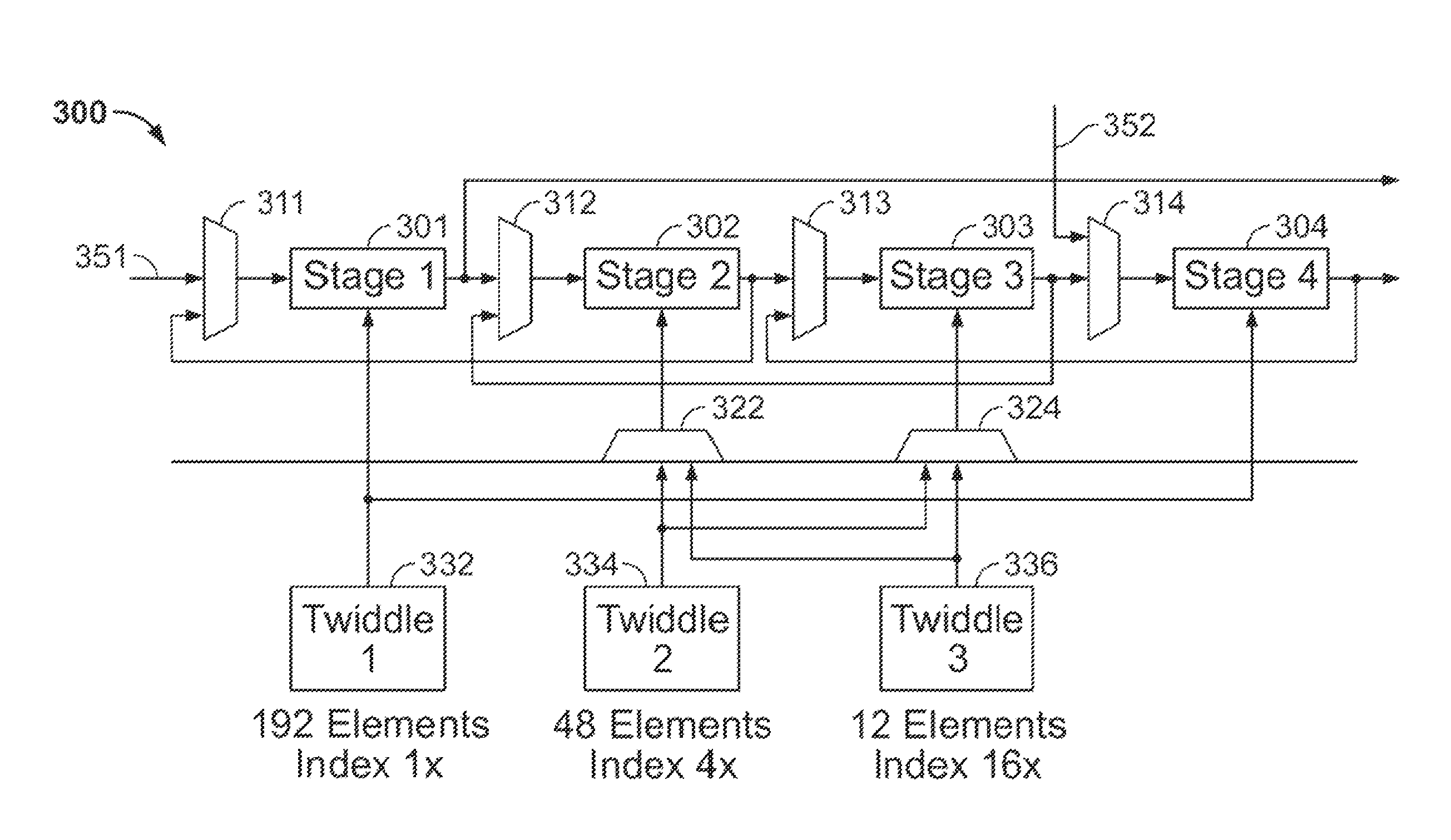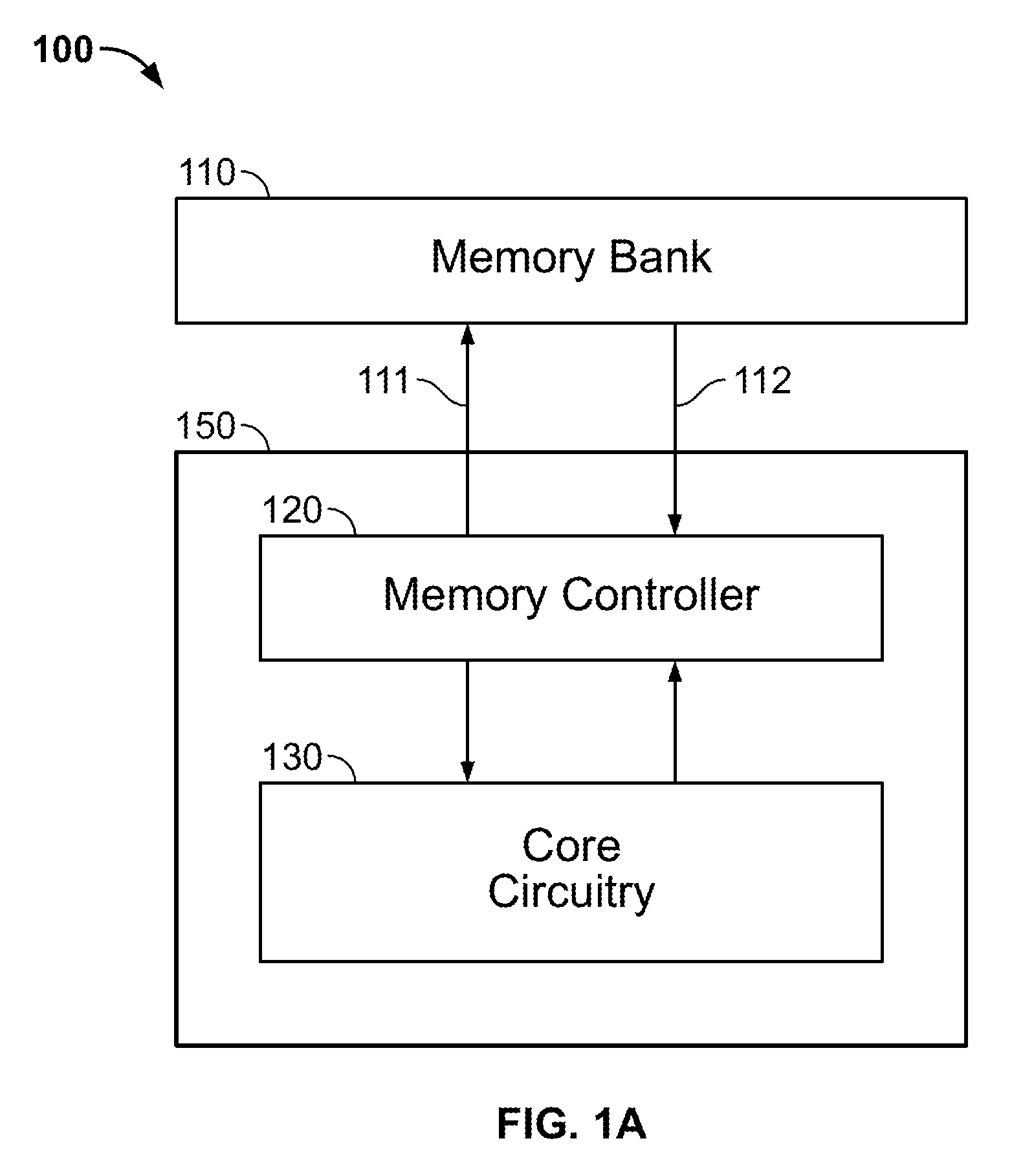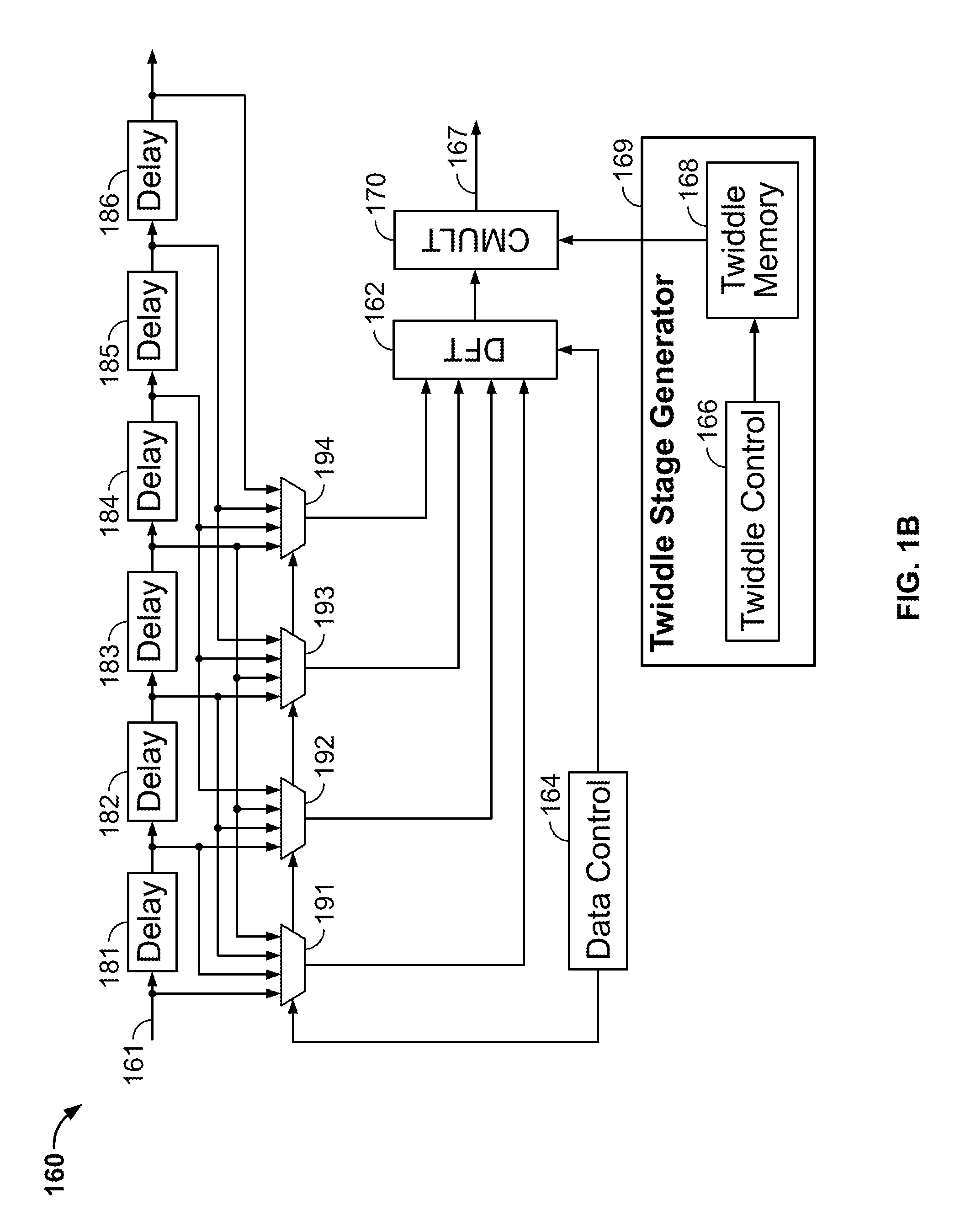Bidirectional fast fourier transform in an integrated circuit device
a fourier transform and integrated circuit technology, applied in the field of bidirectional fast fourier transform (fft) architectures in integrated circuit devices, can solve the problems of low throughput, high usage of logic and memory resources, and general cost and inefficiency of fft and ifft algorithms on data, and achieve the effect of optimizing delay memory usag
- Summary
- Abstract
- Description
- Claims
- Application Information
AI Technical Summary
Benefits of technology
Problems solved by technology
Method used
Image
Examples
Embodiment Construction
[0025]To provide an overall understanding of the invention, certain illustrative embodiments will now be described. However, it will be understood by one of ordinary skill in the art that the systems and methods described herein may be adapted and modified as is appropriate for the application being addressed and that the systems and methods described herein may be employed in other suitable applications, and that such other additions and modifications will not depart from the scope hereof.
[0026]Unlike the unidirectional architecture of FIG. 2, embodiments of the present disclosure may allow bidirectional processing of FFT operations and may perform both reverse and forward FFT operations using the same structure. This may substantially improve performance, lower usage, and decrease size. Details of how to operationalize FFT bidirectionality are further described below.
[0027]FIG. 1A is a simplified block diagram of an illustrative embodiment of an FFT computation architecture where ...
PUM
 Login to View More
Login to View More Abstract
Description
Claims
Application Information
 Login to View More
Login to View More - R&D
- Intellectual Property
- Life Sciences
- Materials
- Tech Scout
- Unparalleled Data Quality
- Higher Quality Content
- 60% Fewer Hallucinations
Browse by: Latest US Patents, China's latest patents, Technical Efficacy Thesaurus, Application Domain, Technology Topic, Popular Technical Reports.
© 2025 PatSnap. All rights reserved.Legal|Privacy policy|Modern Slavery Act Transparency Statement|Sitemap|About US| Contact US: help@patsnap.com



